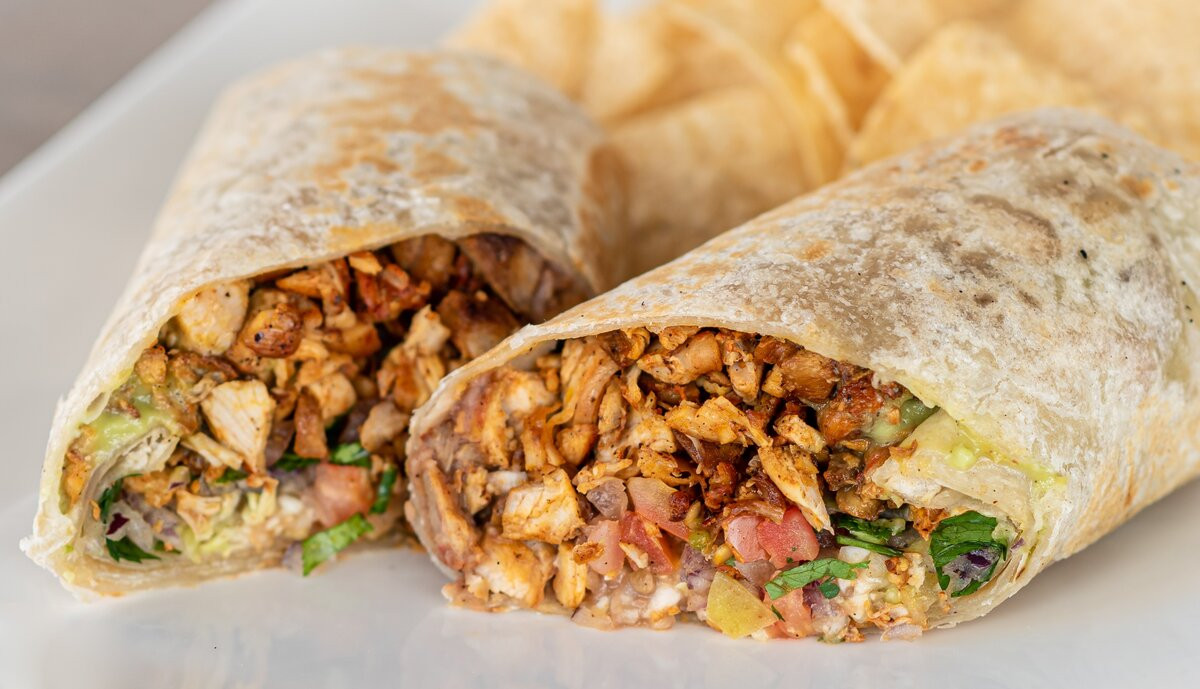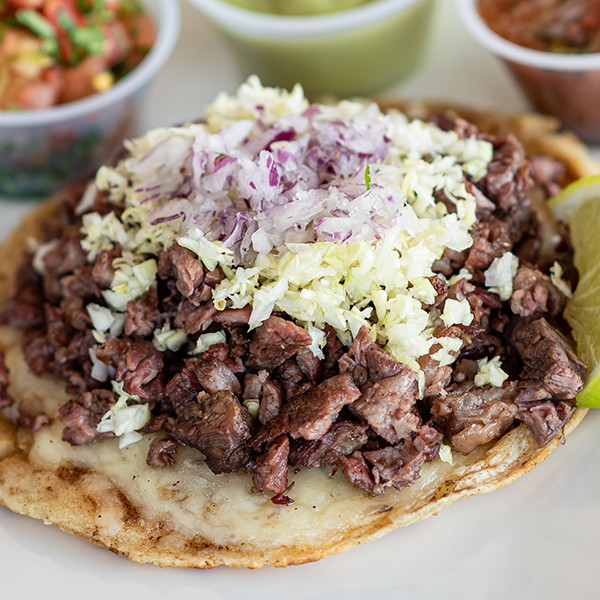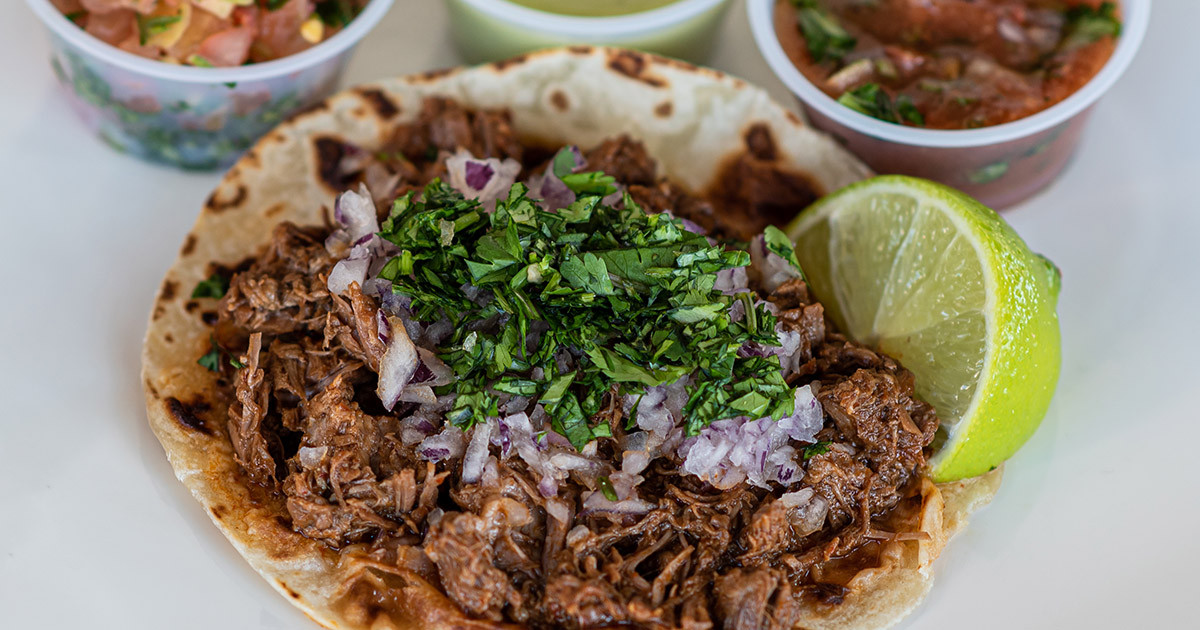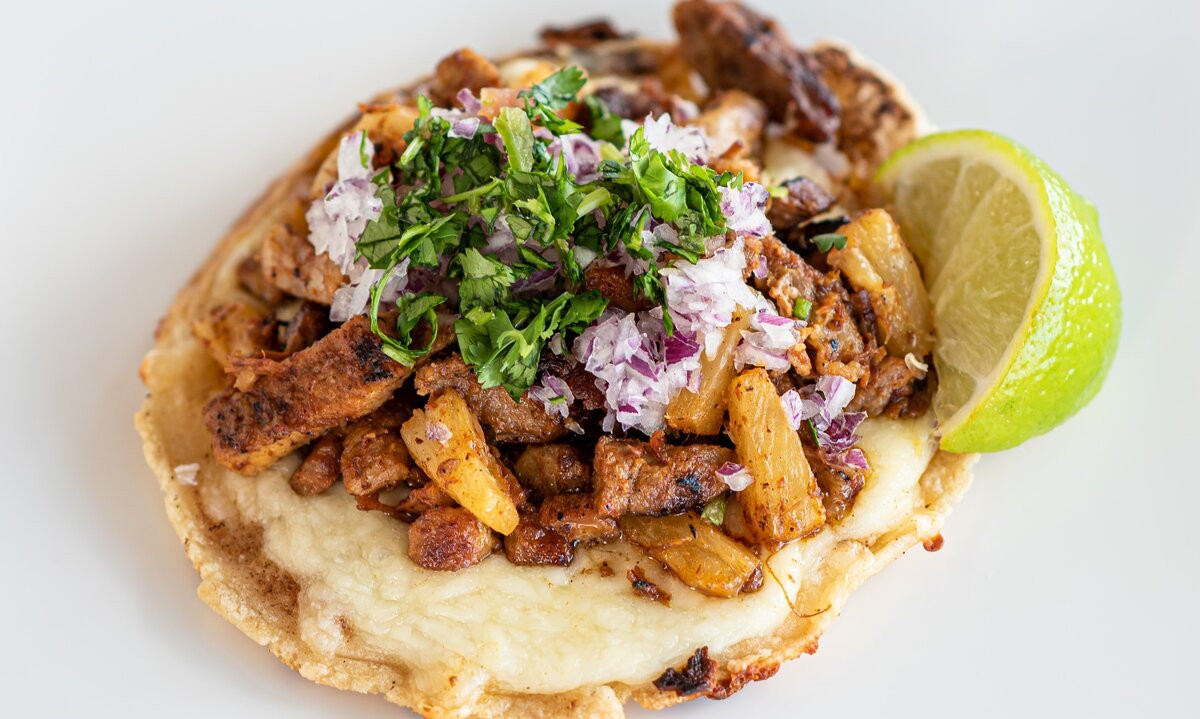Mexican cuisine is a vibrant tapestry of flavors, and at its heart lies a rich tradition of cooking meats. Beyond the familiar Tex-Mex options, Mexico boasts an incredible variety of meat preparations, each with its own unique history, flavor profile, and cultural significance. From succulent grilled steaks to slow-cooked, flavorful stews, Mexican Meats are a cornerstone of the country’s culinary identity. This guide will take you on a journey through some of the most iconic and delicious Mexican meat dishes, exploring the proteins that make Mexican food so beloved around the world.
A Deep Dive into Popular Mexican Meats
Let’s embark on a flavorful exploration of some of the most cherished meats in Mexican gastronomy. While chicken, pork, and beef form the trinity of widely consumed proteins in Mexico, much like in American kitchens, the magic lies in the distinctive regional preparations and seasonings that elevate these meats to new heights. Beyond these staples, Mexican cuisine also embraces unique cuts and traditional cooking methods that are less common elsewhere, offering a truly diverse and exciting culinary landscape for meat lovers.
If you’re craving an authentic taste of mexican meats, you’ll find some of the most popular options right here. Dishes like carne asada, shredded chicken (pollo), al pastor, and birria are just the beginning. These versatile proteins serve as the foundation for a multitude of iconic Mexican dishes. Whether you prefer tacos, burritos, quesadillas, or hearty bowls, these mexican meats can be adapted to create a symphony of flavors.
Let’s delve deeper into the world of mexican meats and uncover the secrets behind their irresistible appeal.
Chicken (Pollo)
 Chicken Burrito
Chicken Burrito
Shredded chicken burrito, a classic and satisfying Mexican dish.
Chicken, or pollo in Spanish, stands as a reigning favorite in Mexican cuisine, appreciated for its versatility and mild flavor that readily absorbs a spectrum of seasonings. It’s a protein that seamlessly integrates into almost every type of Mexican dish imaginable. However, it’s fascinating to note that chicken’s prominent role is a relatively more recent development in the long history of Mexican food.
Before the arrival of Spanish colonists, bringing with them domesticated animals like chickens, cattle, and pigs, the Mesoamerican diet, the precursor to modern Mexican cuisine, relied heavily on beans as the primary protein source. Beans were skillfully combined with chilies and maize (corn) to create a foundational base that permeated Mesoamerican cooking.
Today, chicken has firmly established itself as a staple in Mexican kitchens. Both white meat (breast) and dark meat (thigh) are utilized, each favored for specific cooking applications. Chicken breast, with its leaner profile, is often the choice for shredded chicken preparations. After being boiled and seasoned, it effortlessly shreds, becoming incredibly tender. Frequently, this shredded chicken is then simmered in flavorful sauces, further enhancing its tenderness and infusing it with rich flavors.
Chicken thigh meat, the darker counterpart, is preferred for pan-searing and stewing. Its higher fat content allows it to sear beautifully, developing a delicious crust and remaining juicy. Dark meat also shines in slow-cooked Mexican stews, where its resilience to drying out makes it superior to white meat, ensuring succulent, flavorful results even after prolonged cooking times.
Suggested Reading: The History of Chicken in Mexican Food
Beef (Res)
Beef, much like chicken, has a history in Mexican cuisine that is intertwined with Spanish colonization. The Spanish introduction of cattle into Mesoamerica laid the groundwork for the diverse and beloved beef dishes we know today. This substantial animal provides a variety of cuts that are transformed into numerous popular mexican meats.
Carne Asada
Carne asada, translating directly to “grilled meat,” is a quintessential mexican meat option, celebrated for its simplicity and robust flavor. The beauty of carne asada lies in its minimal preparation, often requiring just salt, pepper, a touch of lime juice, and a sprinkle of cilantro to finish. The magic, however, is in the marinade. A well-crafted carne asada marinade is a symphony of flavors, typically featuring garlic, jalapeños, and a medley of seasonings, with citrus taking center stage. Lime and orange juices are key components, their acidity working to tenderize the meat by gently breaking down proteins. This pre-tenderizing process ensures that the steak emerges from the grill juicy and bursting with flavor.
 Carne Asada Gordita
Carne Asada Gordita
A mouthwatering carne asada gordita, showcasing the versatility of grilled Mexican steak.
The enduring popularity of carne asada stems from its incredible versatility. Its rich yet neutral flavor profile makes it a blank canvas for a wide array of toppings and preparations. Traditionally, carne asada is crafted from skirt or flank steak, and for the most authentic experience, it’s grilled over an open mesquite fire, imparting a distinctive smoky char.
Suggested Reading: The History of Carne Asada
Birria
 Birria (Marinated Shredded Beef) Taco
Birria (Marinated Shredded Beef) Taco
A flavorful birria taco, featuring marinated shredded beef, a popular Mexican street food.
Birria is another celebrated beef dish in Mexican cuisine, although it’s traditionally made with goat or other meats in various regions of Mexico. Many consider birria to be a more complex and intensely flavored dish than carne asada, both in terms of taste and preparation. Unlike carne asada, which relies on a marinade before grilling, birria undergoes a unique cooking process. The meat is initially cooked until tender, then combined with a rich sauce known as consomé, and cooked again, transforming into a deeply flavorful stew. Birria consomé is a labor of love, crafted with guajillo and ancho chiles, Roma tomatoes, a hint of chicken broth, cumin, garlic, and a medley of other spices that create a truly unforgettable taste.
While birria is traditionally savored as a hearty stew, its tender, flavorful meat has found its way into countless other dishes. Birria tacos have become a phenomenon, a staple of Mexican street food, prized for their incredible flavor and portability. The flavorful consomé is generously poured over the tender, shredded beef as it cooks on a plancha, or griddle, before being nestled into a tortilla. Birria taco aficionados often enhance their experience with toppings of cilantro and onion, and by dipping the tacos into a side of the rich consomé.
Suggested Reading: Birria Tacos: An Authentic Mexican Flavor!
Lengua
Lengua, or cow tongue, is another popular mexican meat, although it might be less familiar to some. While not currently on the menu, it’s a beloved choice in Mexico, frequently featured in tacos and also enjoyed stewed, similar to a pot roast. Despite being less common in US cuisine, lengua is a revelation for adventurous eaters. This beef cut, when properly prepared, becomes exceptionally tender and boasts a unique umami richness, often likened to veal or lamb. The classic way to enjoy lengua tacos in traditional Mexican cuisine is with simple yet perfect accompaniments: diced onions, fresh cilantro, a squeeze of lime juice, and perhaps a sprinkle of cotija cheese for a salty finish.
Pork (Cerdo)
Pork enjoys immense popularity and versatility in Mexican cuisine, with a wide array of preparations showcasing its deliciousness. Al pastor, a true gem, proudly represents the best of Mexican pork on the menu.
Al Pastor
 Al Pastor Gordita from Backyard Taco
Al Pastor Gordita from Backyard Taco
Al Pastor gordita, a delightful Mexican street food featuring marinated pork cooked on a vertical spit.
Like birria and carne asada, al pastor is more than just a specific cut of meat; it’s a distinctive style of meat preparation. While various meats can be prepared al pastor, it’s most commonly associated with tenderized pork, marinated and cooked in the “shepherd style,” which is the direct translation of al pastor. The marinade is a vibrant blend, often incorporating the sweetness of pineapple chunks alongside chiles and cilantro, resulting in a unique flavor profile that dances between spicy, salty, and sweet. However, the true hallmark of al pastor is the use of the trompo.
In the traditional method, pork shoulder is marinated, seasoned, and stacked onto a vertical spit called a trompo. This rotating spit allows the pork to slow-cook for hours, rendering it incredibly tender and flavorful. As it cooks, the outer layers of al pastor become beautifully caramelized and slightly crispy. When ready, the succulent mexican meat is shaved in thin slices directly off the rotating spit and served in a variety of ways. Tacos al pastor are a ubiquitous and beloved street food, often adorned with simple yet complementary toppings like onions, cilantro, and a wedge of pineapple.
Suggested Reading: What Is Al Pastor Meat?
Carnitas
Carnitas represents another celebrated mexican meat preparation style that can be applied to various cuts, though it’s most frequently associated with pork. Carnitas is essentially braised and shredded pork, resulting in incredibly tender meat with a more neutral flavor profile, making it highly adaptable to a wide range of accompaniments and dishes. The history of carnitas is deeply rooted in Mexican culinary tradition. It’s said to have originated in 1571 when Spanish conquistador Hernán Cortés, celebrating the fall of the Aztec Empire, butchered a pig and cooked it in the only fat readily available: the pig’s own lard.
Since then, carnitas, which literally translates to “little meats,” has become an integral part of Mexican cuisine. The traditional method involves braising and slow-cooking the pork until meltingly tender, followed by a final step of pan-frying in lard to achieve a crispy exterior. The communal aspect of carnitas preparation is also significant in Mexican culture. During pueblo (town) festivals, communities often come together to prepare massive quantities of carnitas, serving it as a centerpiece of the celebration for all attendees to enjoy. While carnitas is not currently offered, it remains a highly appreciated mexican meat.
Chorizo
Chorizo, a spicy pork sausage, is a culinary staple that transcends borders, appearing in various cultures and cuisines beyond just Mexican food. It’s particularly prevalent in modern Spanish cuisine, especially in the northern regions. Mexican cuisine has embraced chorizo and infused it with its own distinctive flair, introducing unique spices and chili peppers to create a signature Mexican chorizo.
Mexican chorizo derives its characteristic spiciness from the inclusion of Mexican chilies, often resulting in a sausage that is redder in color compared to its Spanish counterpart. Adding chorizo as a protein option to Mexican dishes imparts a delightful spicy kick that is widely appreciated. While not currently on the menu, chorizo is a common ingredient in Mexican breakfast burritos, where its robust flavor is often balanced with eggs and cheese.
Mesquite From Oaxaca, Mexico
Mesquite-style grilled meats are a renowned regional specialty of mexican meats, originating from the Oaxaca region of Mexico. The name “mesquite” comes from the type of wood burned during the grilling process. Mesquite wood imparts a distinctive smoky flavor to the meat that is challenging to replicate with other woods. While mesquite cooking originated in Oaxaca, its popularity has spread northward, gaining significant traction in the southwestern United States.
Many authentic Mexican restaurants employ mesquite-fired grilling techniques to prepare their dishes, mirroring the way barbecue enthusiasts in Texas prize hickory wood for its signature smoky barbecue flavor. The mesquite grilling technique can be applied to any type of meat, infusing it with that unique, umami-rich mesquite essence. The Grilled Tostada Vampiro, a menu highlight, showcases the deliciousness of mesquite grilling, combining your choice of meat, grilled and smoked to perfection over mesquite wood.
Suggested Reading: How to Use Mesquite Flavoring
Burritos From Nuevo León, Mexico
While burritos are now ubiquitous in Mexican restaurants throughout the US, their origins trace back to the Northern regions of Mexico. In Nuevo León, people began using wheat flour tortillas instead of traditional corn tortillas. Wheat flour allowed for the creation of larger tortillas, capable of holding more fillings. Burritos were born from these oversized tortillas, generously stuffed with a combination of meat, beans, cheese, lettuce, and onions.
This convenient and satisfying meal, perfect for enjoying on-the-go or at home, gained popularity in the region and subsequently migrated north into the southwestern United States. Today, the burrito is a cornerstone of Mexican food, found everywhere from fast-food chains to Tex-Mex establishments and beyond. Backyard Taco elevates authentic-style burritos by using grilled mexican meats and traditional toppings, ensuring each bite is a perfect harmony of flavors and textures.
Mexican Food Just Tastes Better
Mexican food possesses an undeniable allure, crafted from fresh, simple ingredients that unite to create a symphony of tastes enjoyed across an ever-expanding global audience. However, for the home cook, replicating authentic mexican meats can be a daunting task. This is especially true when traditional methods involve open mesquite fires, trompos, and the nuanced use of unique Mexican chiles.
Opting for takeout Mexican food or dining in a restaurant allows you to savor all the exquisite flavors of Mexican cuisine without the complexities and cleanup of traditional preparation. Catering a big group is an excellent way to ensure everyone can indulge in an authentic Mexican dish they’ll adore. Visit Backyard Taco and discover how we bring the authentic flavors of traditionally prepared mexican meats to your table. Stop by any of our Backyard Taco locations or have your fiesta catered to experience true “Mexcellence.”
 Dr. Tyler Robison
Dr. Tyler Robison
Tyler Robison
Dr. Tyler loves tacos! He is one of the owners of Backyard Taco, and can sometimes be found moonlighting there at night or on the weekends.
Dr. Tyler Robison is an alum of Mesa’s Mountain View High School. He graduted from Brigham Young University before being accepted to the “Top Ten-nationally ranked” University of Louisville in Kentucky, where he earned his Doctorate in Dental Medicine and a Master’s Degree in Oral Biology. He graduated with honors in the top ten percent of his class. Dr. Robison continued at the University of the Pacific in San Francisco, where he received a second master’s degree in dental science and his orthodontic certification.
Dr. Tyler enjoys serving in his community. He is a provider for the Smile Back Foundation, which offers scholarships for free dental treatment to underprivileged East Valley students. He is also a Major in the U.S. Army Reserve and served during Operation Enduring Freedom in 2008.
Dr. Tyler Robison’s favorite pastimes include spending time with his family on the lake, at the beach, or on the slopes. He is an avid and crazy snowboarder! He has three incredible sons and one sweet daughter: Caden, Jace, Crew, and Bliss.